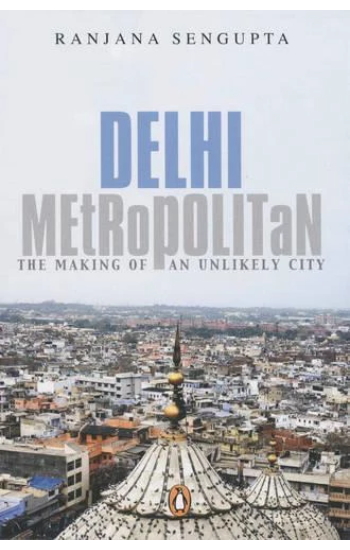
Save: 15%

Save: 15%
Delhi Metropolitan
Publisher:
| Author:
| Language:
| Format:
Publisher:
Author:
Language:
Format:
₹350 ₹298
Save: 15%
Out of stock
Receive in-stock notifications for this.
Ships within:
Out of stock
| Book Type |
|---|
ISBN:
Page Extent:
My understanding of this ferocious, restless, relentless metropolis is that each of us who lives in this city carries a unique, if virtual, Delhi inside our heads.’ Independence, four million refugees from Pakistan and the overwhelming presence of visible and invisible power that flows from New Delhi being the capital have transformed it from the unruffled imperial town it once was to the fearsome metropolis it is today. And yet, says Ranjana Sengupta, this largely unloved city deserves to be loved. Delhi is home to the most diverse population of any city in the country. The unceasing influx of migrants has unleashed new urban architectures of opulence and deprivation. Different groups have set up their own, different universes, and these manage to coexist, not unhappily. And somewhere between the futurist Gurgaon skyline and the proliferating slums, alongside the march of the Metro and the refurbishment of Khan Market, lie Delhi’s unsung sagas—the memories, the passions and the unspoken expectation that the city will change lives. Sengupta illustrates how Delhi is essentially the creation of refugees of all kinds, from those fleeing plundered homes within and across the border to the adventurers who have flocked to the city for the greater opportunities of employment or simply to be close to the hub of political power. The newer Delhi, she says, in its turn gained from the accumulated and diverse talent and capital it acquired from these people, although haphazard development poses a great danger to it. Delhi Metropolitan tracks the changes from the time ‘going to CP’ was almost the only leisure activity for the middle class, looks at the subtle reinventions of government colonies and the shining new suburbs, and inspects the footprints of ‘Punjabification’. Have all these actually managed to colonize this extravagant, indefinable and unlikely city? In a work of immense detail, at once informed and entertaining, Ranjana Sengupta proffers an answer.
My understanding of this ferocious, restless, relentless metropolis is that each of us who lives in this city carries a unique, if virtual, Delhi inside our heads.’ Independence, four million refugees from Pakistan and the overwhelming presence of visible and invisible power that flows from New Delhi being the capital have transformed it from the unruffled imperial town it once was to the fearsome metropolis it is today. And yet, says Ranjana Sengupta, this largely unloved city deserves to be loved. Delhi is home to the most diverse population of any city in the country. The unceasing influx of migrants has unleashed new urban architectures of opulence and deprivation. Different groups have set up their own, different universes, and these manage to coexist, not unhappily. And somewhere between the futurist Gurgaon skyline and the proliferating slums, alongside the march of the Metro and the refurbishment of Khan Market, lie Delhi’s unsung sagas—the memories, the passions and the unspoken expectation that the city will change lives. Sengupta illustrates how Delhi is essentially the creation of refugees of all kinds, from those fleeing plundered homes within and across the border to the adventurers who have flocked to the city for the greater opportunities of employment or simply to be close to the hub of political power. The newer Delhi, she says, in its turn gained from the accumulated and diverse talent and capital it acquired from these people, although haphazard development poses a great danger to it. Delhi Metropolitan tracks the changes from the time ‘going to CP’ was almost the only leisure activity for the middle class, looks at the subtle reinventions of government colonies and the shining new suburbs, and inspects the footprints of ‘Punjabification’. Have all these actually managed to colonize this extravagant, indefinable and unlikely city? In a work of immense detail, at once informed and entertaining, Ranjana Sengupta proffers an answer.
About Author
Reviews
There are no reviews yet.



Reviews
There are no reviews yet.